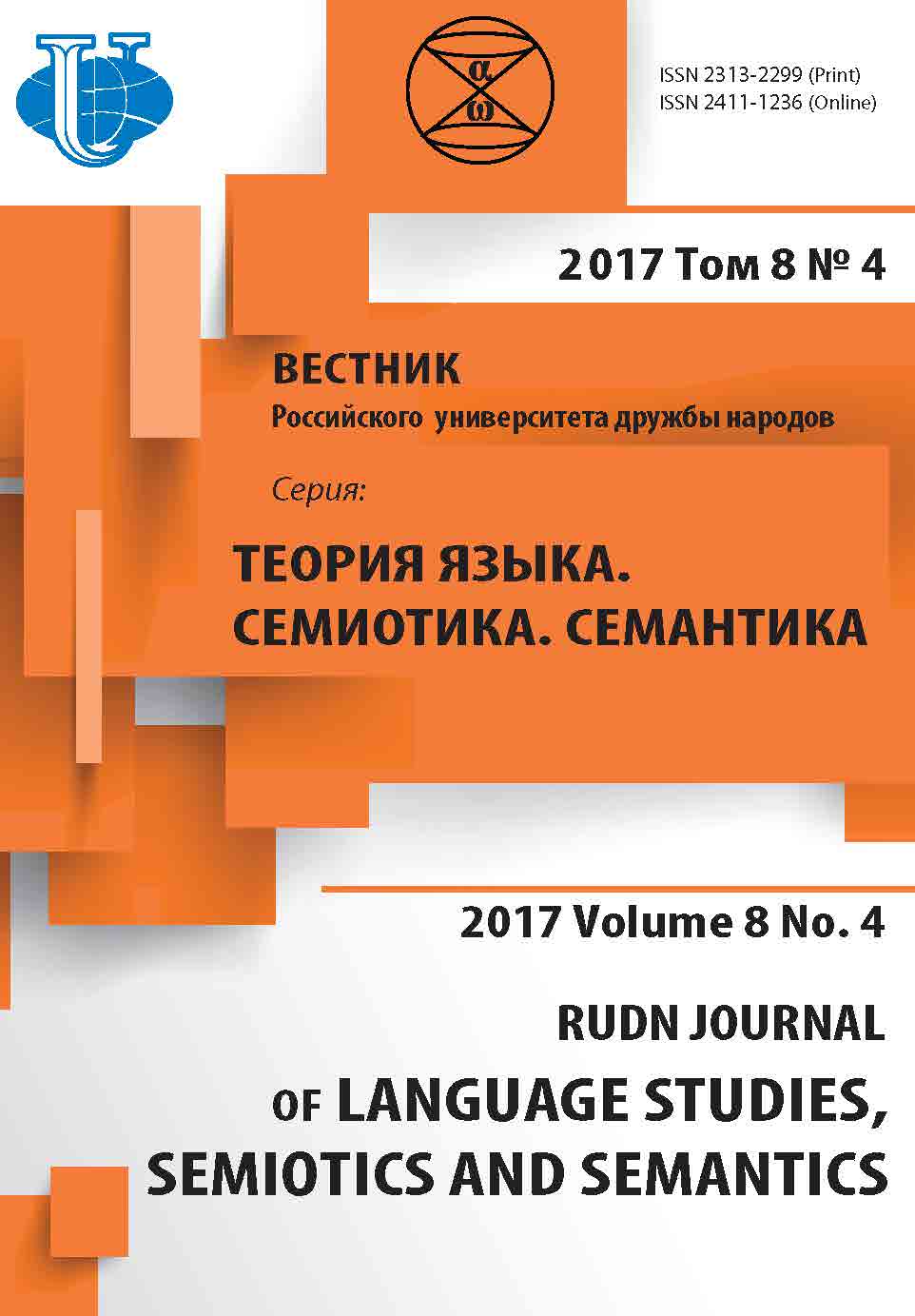THE PROBLEM OF CATEGORIZATION OF THE WORLD AT THE INITIAL STAGE OF THE LANGAUGE DEVELOPMENT (within the Framework of the Salishan Language Squamish)
- Authors: Ikonnikova O.N1
-
Affiliations:
- Rostov Institute of Improving Teachers’ Qualification and Professional Retraining
- Issue: Vol 8, No 4 (2017)
- Pages: 1033-1040
- Section: Articles
- URL: https://journals.rudn.ru/semiotics-semantics/article/view/17984
- DOI: https://doi.org/10.22363/2313-2299-2017-8-4-1033-1040
Cite item
Full Text
Abstract
The material of the endangered Salishan language Squamish is of great importance for the universal principle of constructing a diachronic linguistic structure. Based on the analysis of the vocabu-lary and text material of the Salishan language Squamish the author comes to the hypothesis that in the pro-cess of categorization at the initial stages of the language development the world was perceived as a dynamic phenomenon, which led to the dominance of the verbal predicate, that went through the process of nomi-nalization to express arguments of the sentence. The analysis of the means of transferring substantive vocabulary in the Squamish-English dictionary and in the Squamish text indicates that the majority of the linguistic units of the substantive vocabulary of the language are represented by derivatives, which are actually nominal verbal predicates. Thus, the material of the Squamish language, as well as other Salishan languages, suggests that the categorization of the world at the initial stages of the language development was based on the processes of polycategorization / recategorization of the verb, i.e. in the diachronic model of the grammatical categories at the initial stages of the language development, the omnipresence of the verbal predicate dominated, which recycled to perform the function of the argument.
About the authors
Olga N Ikonnikova
Rostov Institute of Improving Teachers’ Qualification and Professional Retraining
Author for correspondence.
Email: iconolga@mail.ru
Ikonnikova Olga Nikolaevna, Candidate of Philology, Associate Professor of Department of Pedagogy at Rostov Institute of Improving Teachers' Qualification and Professional Retraining; intersts: salishan language, squamish, categorization, verbal predicate, nominalization, substantive, lexical suffix
Dolomanovsky Lane, 31, Rostov-on-Don, Russian Federation, 344011References
- Kuipers, A.H. (1967). The Squamish Language: Grammar, Texts, Dictionary. The Hague—Paris: Mouton and CO.
- Katsnel’son, S.D. (1984). Speech-cogitative processes. Topics in the study of language, 4, 3—12. (in Russ.).
- Boldyrev, N.N. (2014). Cognitive semantics. Introduction to cognitive linguistics: lectures. Tambov: Izd. Dom TGU im. G.R. Derzhavina. (in Russ.).
- Beck, D. Unidirectional flexibility and the noun-verb distinction in Lushootseed: URL: http://www.ualberta.ca/~dbeck/FlexDist.pdf (accessed: 04.04.2017).
- Anward, J. (2000). A dynamic model of parts-of-speech differentiation. In: Approaches to the typology of word classes. Berlin; New York: Mouton de Gruyter. 3—46.
- Losev, A.F. (1982). Sign. Symbol. Myth. M.: Izdatelstvo Moskovskogo universiteta. (in Russ.).













